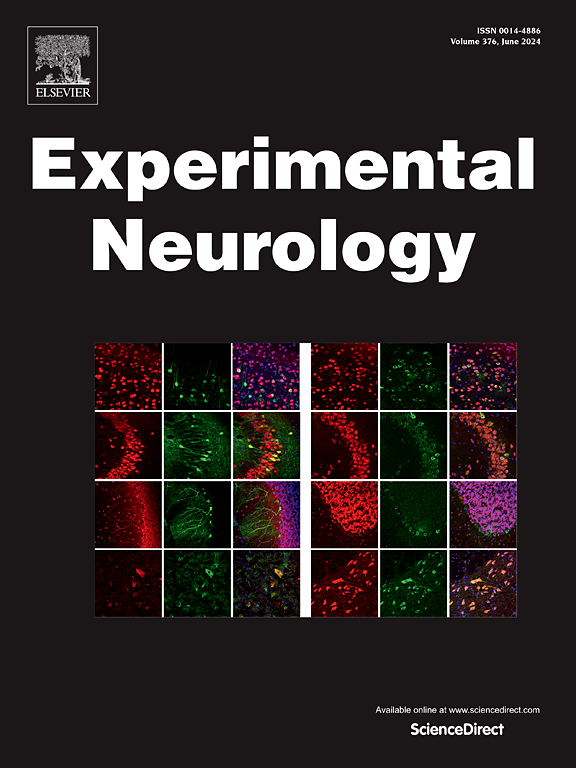缺少前搬运工会抑制果蝇中 parkin 表型的特征。
IF 4.6
2区 医学
Q1 NEUROSCIENCES
引用次数: 0
摘要
背景:基于模式生物的科学研究有助于了解帕金森病这一第二大神经退行性疾病的生物学特性。黑腹果蝇的基因 parkin 突变体(与人类的 PARK2 同源)表现出特征明显的表型,包括多巴胺能神经元缺失、存活率降低和运动缺陷。通过对果蝇可逆性神经变性这一特殊病例的转录组分析,我们的研究小组发现,与人类 TXNDC5 同源的 pretaporter 基因在逆转阶段被下调。在此,我们探讨了一个假设,即pretaporter的表达缺乏将抑制果蝇parkin突变体中观察到的表型:方法:在通过免疫化学方法确定 Pretaporter 在 PPL1 多巴胺能神经元中表达后,我们构建了 pretaporter-parkin 双突变体果蝇,通过免疫组化、存活和爬行实验来研究这一假说:结论:研究发现,pretaporter功能缺失突变在几个关键方面显著抑制了parkin功能缺失突变导致的表型:它消除了通常在parkin突变蝇中出现的PPL1神经元缺失,促进了雌雄蝇的存活,并减少了parkin雌蝇运动能力的衰退。我们认为,parkin突变蝇体内缺少Pretaporter可使多巴胺能神经元对Draper介导的吞噬作用产生抵抗力,从而防止多巴胺能神经元的死亡。本文章由计算机程序翻译,如有差异,请以英文原文为准。
Absence of pretaporter restrains features of the parkin phenotype in Drosophila
Background
Scientific research based on model organisms can help to understand the biology of Parkinson's Disease, the second most prevalent neurodegenerative disease. Drosophila melanogaster mutant for the gene parkin, homologous to human's PARK2, exhibit well-characterized phenotypes including loss of dopaminergic neurons, lower survival and motor defects. Through the transcriptomic analysis of an exceptional case of reversible neurodegeneration in Drosophila, our group identified that the gene pretaporter, homologous to TXNDC5 of humans, was downregulated in the reversal phase. Here, we explore the hypothesis that the lack of expression of pretaporter will restrain phenotypes observed in Drosophila parkin mutants.
Methods
After establishing by immunochemistry that Pretaporter is expressed in PPL1 dopaminergic neurons, we constructed pretaporter-parkin double mutants flies to investigate the hypothesis through immunohistochemistry, survival and climbing assays.
Conclusions
It was found that the loss-of-function mutation in pretaporter significatively restrains the phenotype caused by the loss-of-function mutation in parkin in several key aspects: it abolished the loss of PPL1 neurons normally seen in parkin mutant flies, promoted their survival in both sexes and reduced the decay in motor ability in parkin female flies. We propose that the absence of Pretaporter in parkin mutant flies prevents the death of dopaminergic neurons by rendering them resistant to Draper-mediated-phagocytosis.
求助全文
通过发布文献求助,成功后即可免费获取论文全文。
去求助
来源期刊

Experimental Neurology
医学-神经科学
CiteScore
10.10
自引率
3.80%
发文量
258
审稿时长
42 days
期刊介绍:
Experimental Neurology, a Journal of Neuroscience Research, publishes original research in neuroscience with a particular emphasis on novel findings in neural development, regeneration, plasticity and transplantation. The journal has focused on research concerning basic mechanisms underlying neurological disorders.
 求助内容:
求助内容: 应助结果提醒方式:
应助结果提醒方式:


